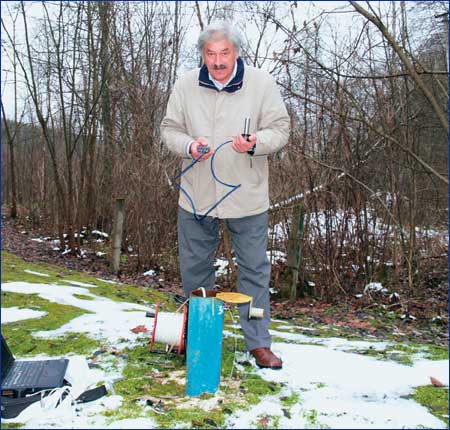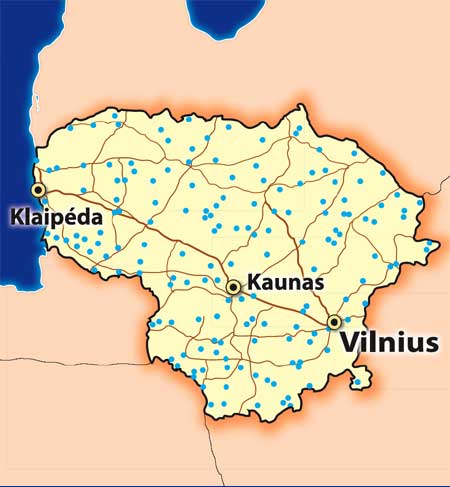
Groundwater is the sole source of drinking water in Lithuania; therefore, the importance of protecting this resource was recognized many years ago. To maintain their supply, a regular groundwater monitoring program was established in 1946. By 1962 the monitoring network had spread across most of the country, with more than 20 monitoring stations, including 190 observation wells.

Approximate Location of Observation Wells in National Groundwater Monitoring Network
Today the monitoring program consists of over 150 monitoring stations with more than 250 observation wells, primarily overseen by the Lithuanian Geological Survey. Numerous wells are installed in areas with varying hydrological conditions and are monitored for water levels, contamination, and general chemical and physical characteristics. The detailed longterm data obtained through the network allowed a map of groundwater recharge rates to be created for the entire country.
Up until 2005 contracted personnel used tapes, 2 to 5 times every month, to manually measure water levels in the observation wells. When it was realized that more frequent data would be required to increase management of groundwater resources and improve estimates of recharge rates, the Lithuanian Geological Survey decided to purchase Solinst Leveloggers to automate the monitoring process.
The Geological Survey installed Leveloggers at 61 monitoring stations in 73 wells, and set them to record daily water level readings. Field technicians download the data twice a year, in some cases using a Leveloader field data transfer device. All groundwater data is stored in a central database by the Geological Survey.
The Leveloggers are found to provide highly accurate readings, which are instrumental in evaluating groundwater recharge conditions. Using Leveloggers decreased monitoring costs and time in the field, while the amount of valuable data increased. As the demand for more detailed data continues to grow, there are plans to install ten Telemetry Systems in 2009, in order to view daily groundwater fluctuations.
Acknowledgements: Solinst would like to thank Kestutis Kadunas of the Lithuanian Geological Survey and Bernardas Paukstys, Solinst Agent in Lithuania, for providing details and assisting in the completion of this article.
